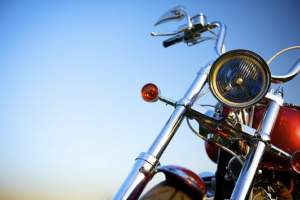Some Consider Motorcycles To Be More Dangerous Than Driving A Car. Here Are Some Safety Tips For New Riders.

Each year, bikes are made stronger and faster, than in previous years. Below are some tips to help you stay safe on two wheels.
Don’t buy more bike than you can handle. If you’ve been off of motorcycles for awhile, you may be surprised by the performance of today’s bikes. Even models with small-displacement engines are notably faster and more powerful than they were 10 or 20 years ago.
Invest in antilock brakes. Now available on a wide array of models, antilock brakes are a proven lifesaver.
Hone your skills. As Honda’s Jon Seidel puts it, “There is nothing we could say or advise more than to go find a Motorcycle Safety Foundation (MSF) riding course in your area.
Use your head. Yes, helmets are an emotional topic for some riders. But the facts show the risk. Riders without a helmet are 40 percent more likely to suffer a fatal head injury in a crash and are three times more likely to suffer brain injuries, than those with helmets, according to government studies.
Wear the right gear. Jeans, a T-shirt, and sandals are recipes for a painful disaster on a bike. Instead, you want gear that will protect you from wind chill, flying bugs and debris, and, yes, lots of road rash if you should slide out.
Be defensive. A recent study by the University of South Florida’s Center for Urban Transportation Research found that in collisions involving a motorcycle and a car, car drivers were at fault 60 percent of the time. So, you need to be extra alert, especially in this age of epidemic phone use and texting behind the wheel.
Avoid bad weather. Slippery conditions reduce your margin for error. Rain not only cuts your visibility but reduces your tires’ grip on the road, which can make cornering tricky. If you need to ride in the rain, remember that the most dangerous time is right after precipitation begins, as the water can cause oil residue to rise to the top. And avoid making sudden maneuvers.
Watch for road hazards. A motorcycle has less contact with the pavement than a car. Sand, wet leaves, or pebbles can cause a bike to slide unexpectedly, easily resulting in a spill. Bumps and potholes that you might barely notice in a car can pose serious danger when on a bike.
Be ready to roll. Before each ride, do a quick walk-around to make sure your lights, horn, and directional signals are working properly. Check the chain, belt, or shaft and the brakes. And inspect the tires for wear and make sure they’re set at the proper pressure.
Source: 1
